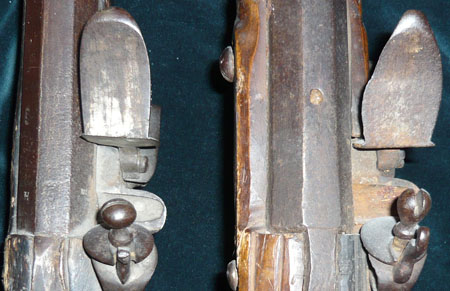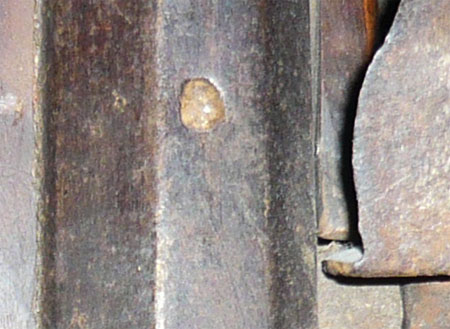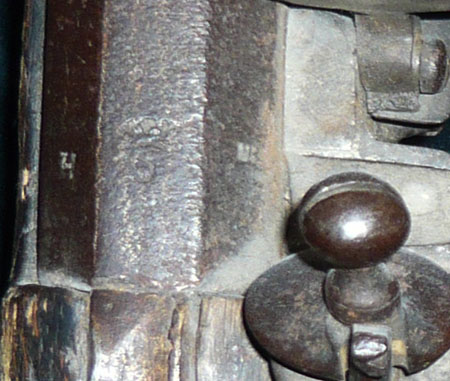M1680 Infantry Musket (appr)
The first delivery of military flintlock muskets from Denmark to Norway was recorded in 1653. None of these are known today, neither are later models of flintlock muskets from before the M1680′s. Old & defective guns were disassembled and the metal from them was sent to Denmark in the 1600 and early 1700’s. From the late 1700’s they were auctioned off to the general public in Norway. As a result, one still finds a substantial number of civilian long-guns with a partly very old military past, but stock are changed, lock modernized and they can have parts from several different military models. The original military versions from before appr. 1730 are very hard to find.
Snaphaunce, matchlocks and combinations of these were in use by the military in Norway in the second half of the 1600′s. The appr. M1680 is the first flintlock musket model being dated by the Norwegian Military museum. There seems to be a number of unanswered questions in regards to these muskets – some seem to have been made in Denmark, some in Thüringen, some seemingly came from Amsterdam and some even built locally in Norway. The one on the pictures here is most possibly made in Norway.
 There are records of 360 barrels etc. were delivered to Oplandske Regiment (probably from Fossum Brug) in 1691. These were to be assembled with locks, stock and trimmings locally. This probably is one of these muskets.
There are records of 360 barrels etc. were delivered to Oplandske Regiment (probably from Fossum Brug) in 1691. These were to be assembled with locks, stock and trimmings locally. This probably is one of these muskets.
This really is a huge and sturdy musket. It is 151 cm long with a barrel of 113 cm. The stock is really thick  by the but-plate, typical for the late 1600’s. The rear 21 cm of the barrel is octagonal, the rest of the barrel is round. There is an iron front sight and no rear sight. All mounts are in iron, three ramrod pipes and a full stock with no nose cap. The ramrod is missing. The birch stock was supposed to have been carved locally and the carving really is fairly crude. This might, of course, be a secondary stock, but then also from the period. There are carvings around the lock
by the but-plate, typical for the late 1600’s. The rear 21 cm of the barrel is octagonal, the rest of the barrel is round. There is an iron front sight and no rear sight. All mounts are in iron, three ramrod pipes and a full stock with no nose cap. The ramrod is missing. The birch stock was supposed to have been carved locally and the carving really is fairly crude. This might, of course, be a secondary stock, but then also from the period. There are carvings around the lock  plate, side plate and the barrel tang. The stock also has the deep grooves on either side of the ramrod that are typical for the period.
plate, side plate and the barrel tang. The stock also has the deep grooves on either side of the ramrod that are typical for the period.
On the top of the barrel there has been knocked inn a stamp, really hard and really deep – was the barrel hot and soft when it was done (see the barrel to the right)? The stamp is almost impossible to identify, but seems to be a C5 – Christan V. I happened to have a really messed up and shortened down version of what seems to be one more of these muskets (the barrel to the left). Here the stamp is easier identified as a crowned C5 – Christian V. He died in 1699, fitting perfectly for a production in 1691.
The appr. M1680 was to be fitted fitted with a double-edged plug bayonet with an iron cross guard to be mounted in the muzzle. The two plug bayonets on the picture do not belong to this rifle, they are only there to show what a plug bayonet looks like. The larger is probably an officers bayonet from England or the continent, the other one a Spanish plug bayonet from the 19th. century.
Please mail me if you have information on 17th century fire-arms used in Norway at .

